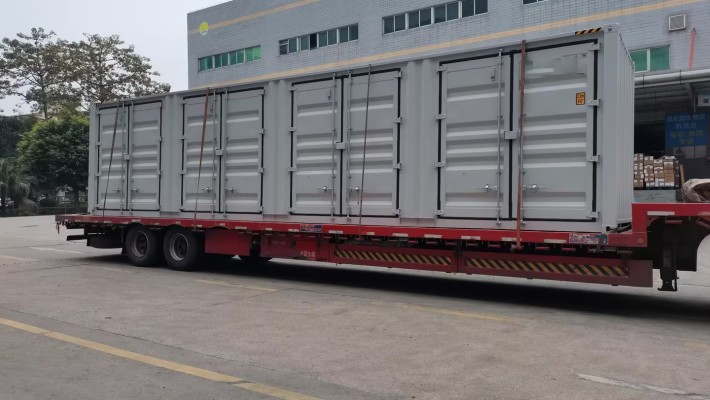Freight Forwarder Insights
Huin International Logistics Latest Articles
Cargo shipping and freight forwarding for energy storage
We live in an era where lithium-ion batteries power our world. They are widely used in electronics and electric vehicles. They are known for their light weight, high energy density, and rechargeability. Batteries, however, can pose a serious hazard if they are not stored and handled correctly. A lithium-ion battery has a variety of requirements from its manufacturer. Here are some basic requirements.
Storage of Lithium-Ion Batteries
It is advised to store lithium-ion batteries at 59 degrees Fahrenheit. Warehouses should have temperature-controlled storage capabilities to maintain a suitable temperature, particularly during the summer and winter seasons. If the battery's temperature is compromised, it could result in fire, injury, or property damage. Storing the batteries at their optimal temperature promotes a longer lifespan.
Typically, lithium-ion batteries are kept at a 40% charge for safe storage, but it is important for the manufacturer to indicate the ideal level of charge. When a battery is fully charged, it can deteriorate more quickly and potentially overheat internally, while completely drained batteries are prone to freezing. To avoid any issues, it is recommended to keep cell voltage between 2.0 and 4.1 volts, regardless of the charge level.
In addition, specific storage methods such as specialized racking systems or crates may be necessary. These measures are crucial for safeguarding the batteries and ensuring their proper functioning. For facilities with multiple clients, it is important to keep the batteries in a cool and dry location that is separate from other items.
Handling of Lithium-Ion Batteries
Batteries should be treated with care during transportation and repacking. Refrain from disassembling, puncturing, or crushing them. Additionally, be mindful of avoiding any vibration or shock that may affect the batteries. In the event of battery fluid leakage, handle the disposal process without directly touching the fluids.
It is advised for the facility to have a fire suppression system in their storage areas. In the event of a lithium-ion battery fire, employ a CO2 (Class BC) or dry chemical (Class ABC) fire extinguisher. Avoid using a water-based (Class D) fire extinguisher for battery fires.
Transportation of Lithium-Ion Batteries
The U.S. Department of Transportation's (DOT) Hazardous Materials Regulations (HMR; 49 C.F.R., Parts 171-180) classify lithium-ion batteries as a hazardous material. Improper transportation of these batteries according to HMR standards can pose both electrical and chemical hazards.
Prior to shipping, lithium-ion batteries must have an approved battery test summary readily accessible for others involved in the supply chain. These tests must adhere to the UN 38.3 requirements and cover various transportation factors such as altitude, forced discharge, overcharge, thermal testing, vibration, shock, impact, crush or external short circuit. Different shipping guidelines exist depending on the packaging and size of the batteries. As part of regulations, proper labeling, employee training and emergency response details are crucial for the safe handling of lithium-ion batteries.
Follow the Manufacturer’s Instructions
Ultimately, it is crucial for both warehouses and transporters to adhere to the specific guidelines set by the manufacturer. As mandated by federal regulations, these measures ensure safe handling and transportation practices. It is imperative that these requirements are detailed and unambiguous, as per the regulations. Additionally, proper documentation and labeling must accompany the batteries throughout the supply chain. If there is any uncertainty, it is best to contact the manufacturer directly for further clarification before proceeding with transporting or storing goods.
In the event of an emergency, it is crucial that your employees are properly trained in both the emergency response plan and hazardous safety procedures. While hazards may arise, their swift and proper response will greatly impact the severity of the situation.
